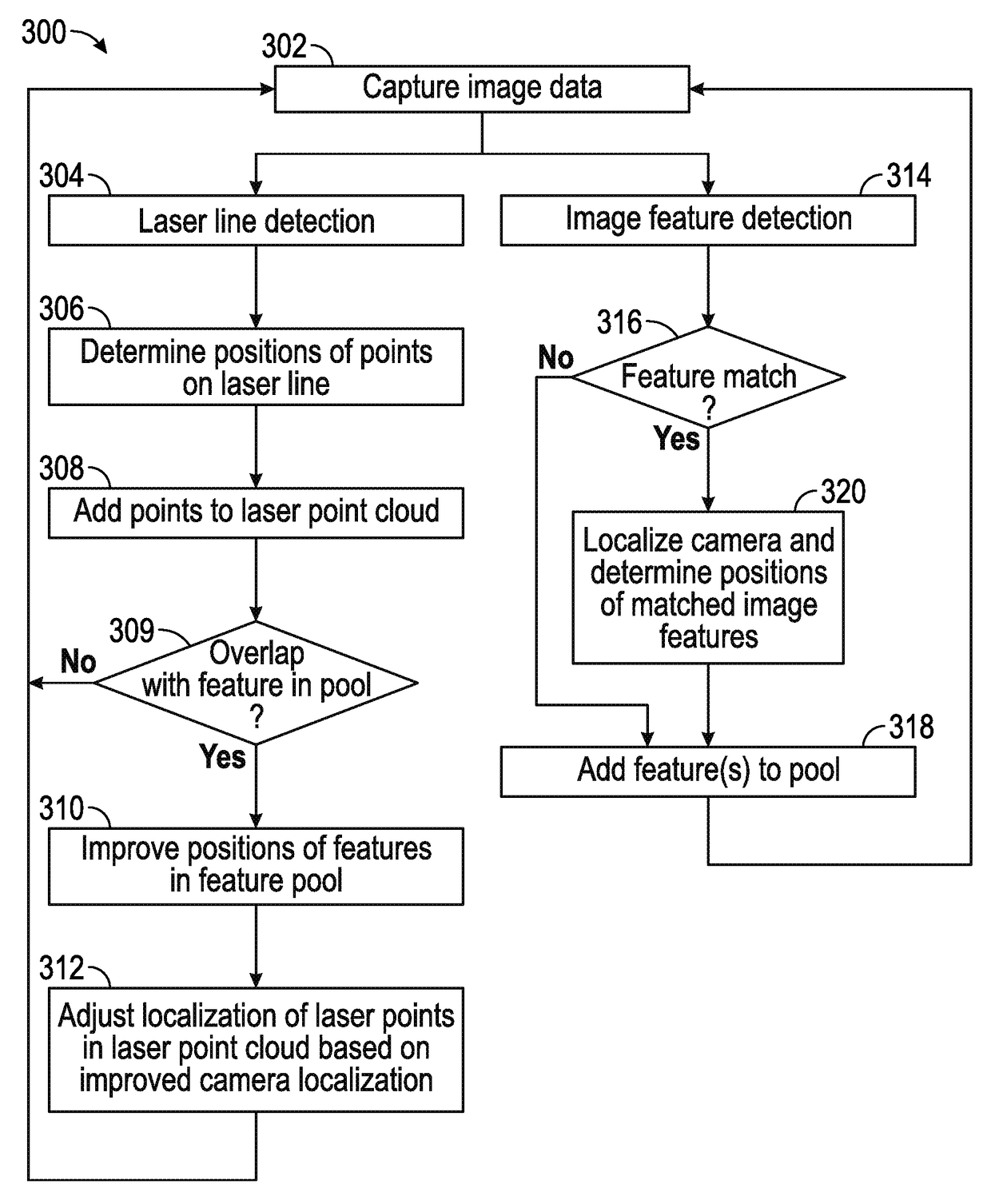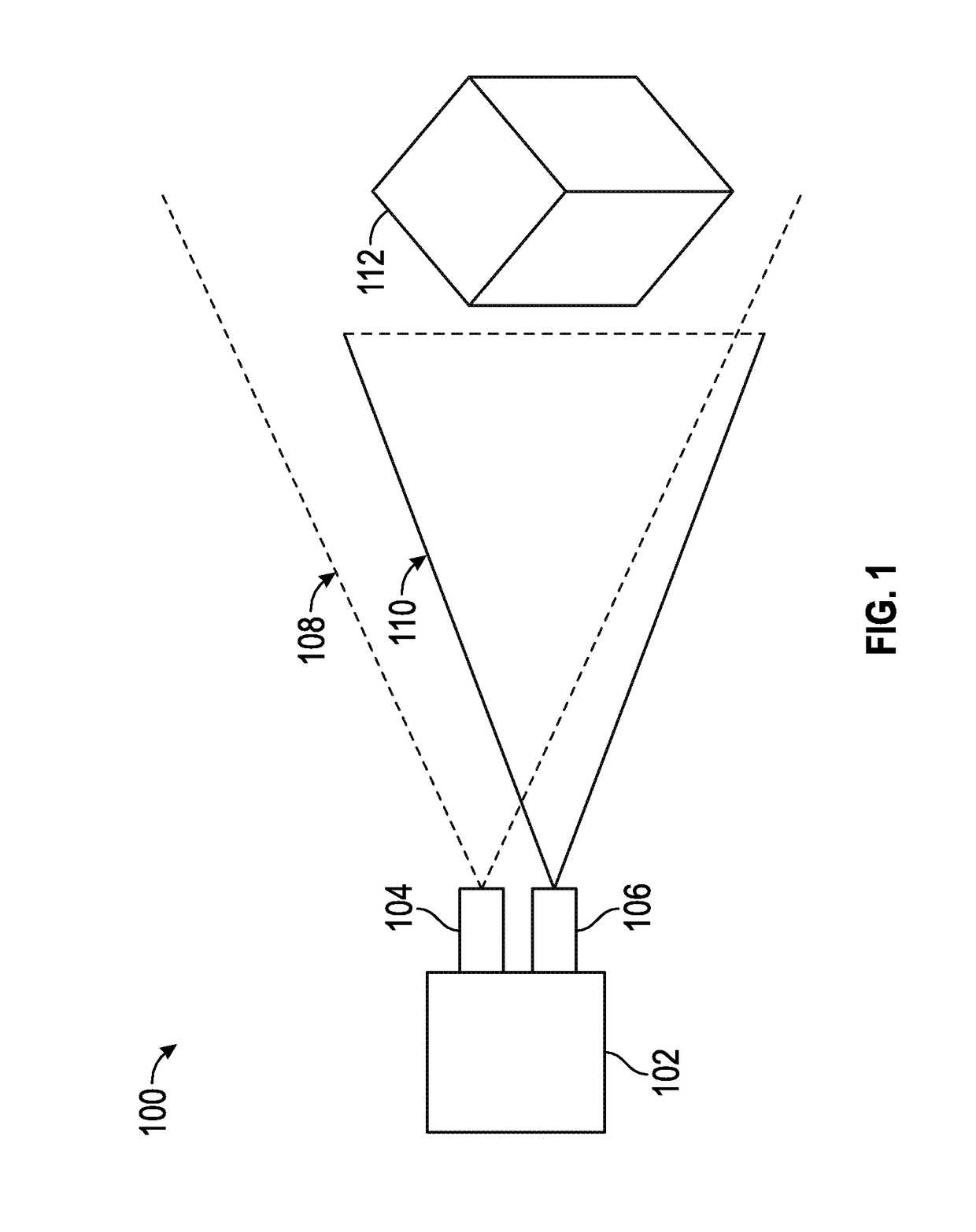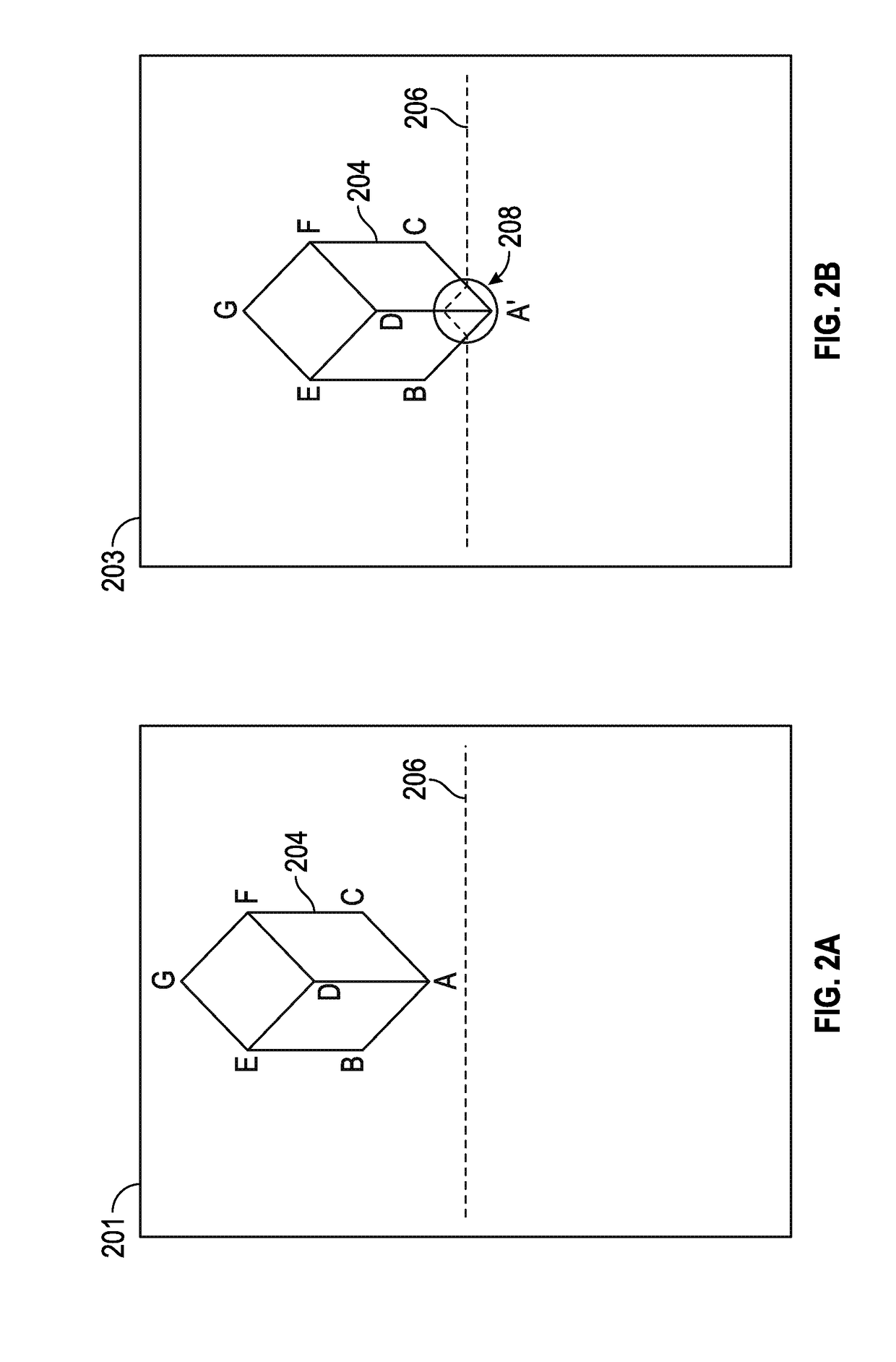Laser-enhanced visual simultaneous localization and mapping (SLAM) for mobile devices
a technology of simultaneous localization and laser, applied in the field of laser-enhanced visual simultaneous localization and mapping (slam) for mobile devices, can solve the problems of difficult to solve, easy loss of slam algorithms, and inability to recover large flat areas (e.g., texture-less) areas, so as to improve the accuracy and robustness of camera localization and density of environment mapping
- Summary
- Abstract
- Description
- Claims
- Application Information
AI Technical Summary
Benefits of technology
Problems solved by technology
Method used
Image
Examples
Embodiment Construction
[0014]In the following description of examples, reference is made to the accompanying drawings which form a part hereof, and in which it is shown by way of illustration specific examples that can be practiced. It is to be understood that other examples can be used and structural changes can be made without departing from the scope of the disclosed examples.
[0015]FIG. 1 illustrates an exemplary laser-enhanced SLAM device configuration 100 according to examples of the disclosure. SLAM device 102 can include an optical camera 104 and a laser line generator 106. Optical camera 104 can be any kind of optical camera, such as an RGB sensor-based optical camera. Laser line generator 106 can be any kind of laser generator that can generate a laser line across an object to be scanned by SLAM device 102, as will be described in more detail below. In some examples, the laser line can be generated by the SLAM device by fanning out a laser beam into a laser plane using an appropriate lens (such a...
PUM
 Login to View More
Login to View More Abstract
Description
Claims
Application Information
 Login to View More
Login to View More - R&D
- Intellectual Property
- Life Sciences
- Materials
- Tech Scout
- Unparalleled Data Quality
- Higher Quality Content
- 60% Fewer Hallucinations
Browse by: Latest US Patents, China's latest patents, Technical Efficacy Thesaurus, Application Domain, Technology Topic, Popular Technical Reports.
© 2025 PatSnap. All rights reserved.Legal|Privacy policy|Modern Slavery Act Transparency Statement|Sitemap|About US| Contact US: help@patsnap.com



